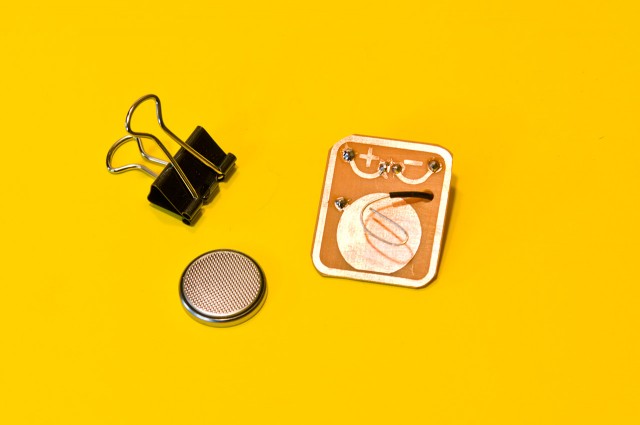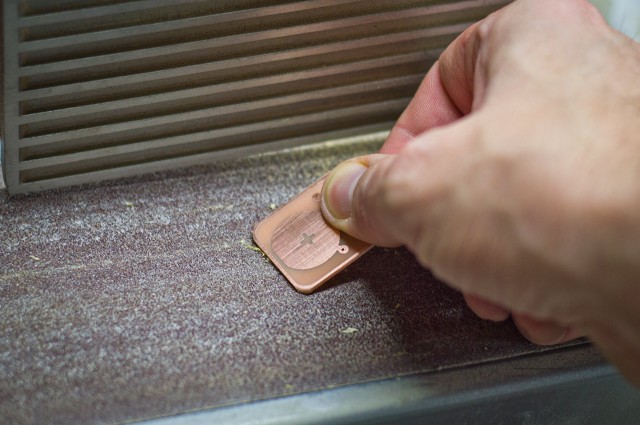
I’m almost set for the Zoom Milwaukee Symposium this week. I’ll be in the Maker Plaza teaching people how to solder with the DIY kit I’ve been working on for the last few weeks. (Check out Part I, Part II, Part III, and Part IV if you haven’t seen them yet.)

It doesn’t look like a lot, but there’s over 100 PCBs that were made at home. I cut all the vinyl, etched them, drilled them, cut them apart, and sanded the edges.

There are a few options for LEDs, ranging from plain green and blue to flashing red and flickering orange. (There’s probably over 400 LEDs here.)

The resistor you use will depend on the LED you choose. I’ll be able to talk about limiting current and how it is calculated for different LEDs.

And of course there are batteries. I’ve got 100 CR2032 cells, which came in just under $18 for all of them thanks to ebay.

There are 144 binder clips to hold the batteries to the PCBs. Again the cheapest I could find, thanks to Amazon.

A few spools of solid core wire and some solder. (I’ve got more solder than this, not that we’ll need a lot, but multiple rolls are helpful.)

I also went crazy and got some Neodymium magnets in case people want to attach their PCB to other things. (I tried to arrange the magnets a bit more orderly for the photo but it was impossible!)

Here’s the back of the PCB. You can see how the board has been etched to leave just the copper traces to complete the circuit. (The ring around the edge is just a guide for the cutting and sanding.)

Here’s the front of the PCB. You can see the LED, resistor, and the wire that leads to the back through the hole which serves as the battery connector. And of course the binder clip holds the battery in place.

You can remove the arms of the binder clip if you want to stand the PCB up, attach it to something, or just be more streamlined.



And hey, with the addition of the magnet you can even turn it into a wearable! Be the envy of the Zoom After Party (wait, is there one?) with your flickering, flashing, or constantly lit LED PCB!
This is just one post in a series, check out the other posts as well:























